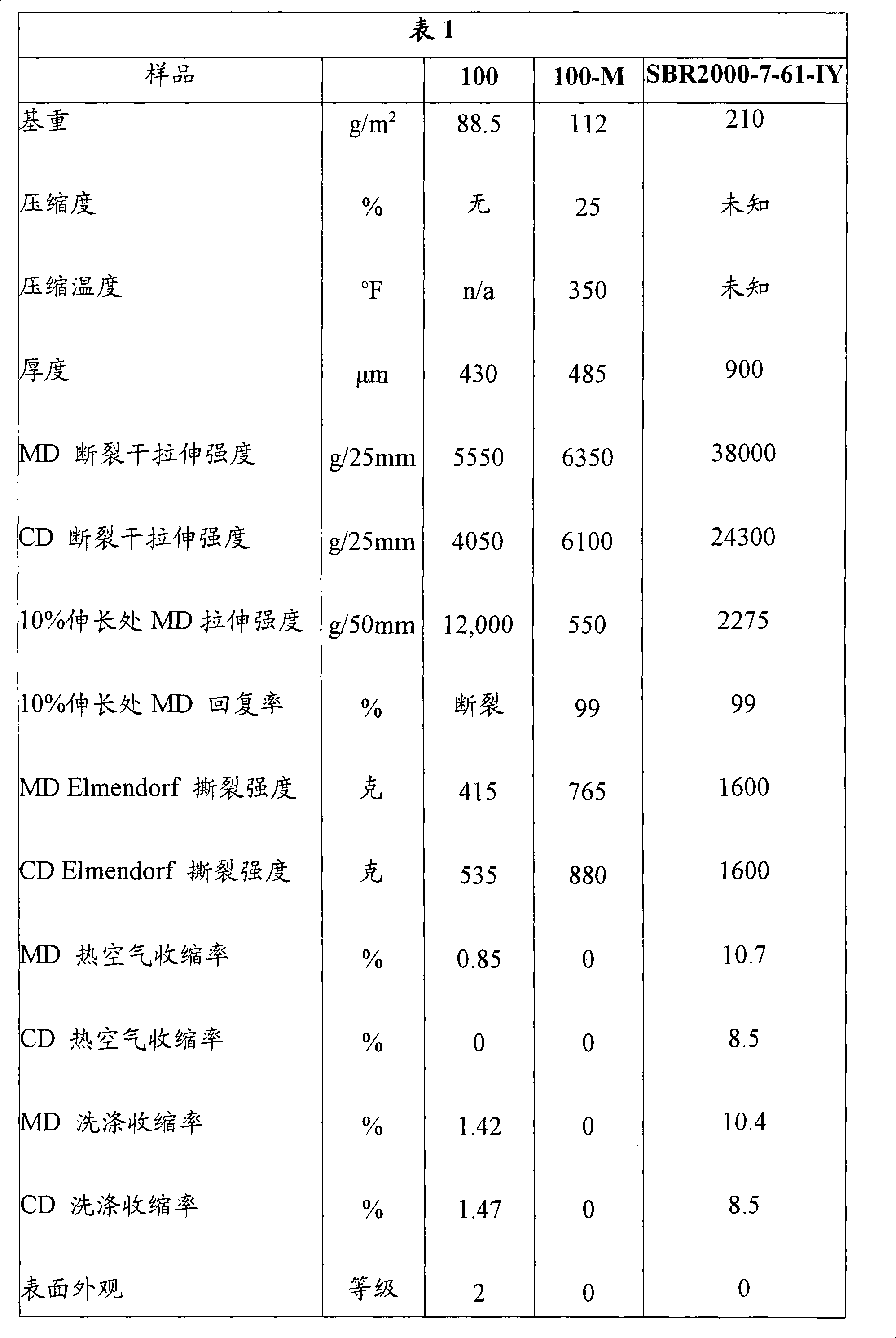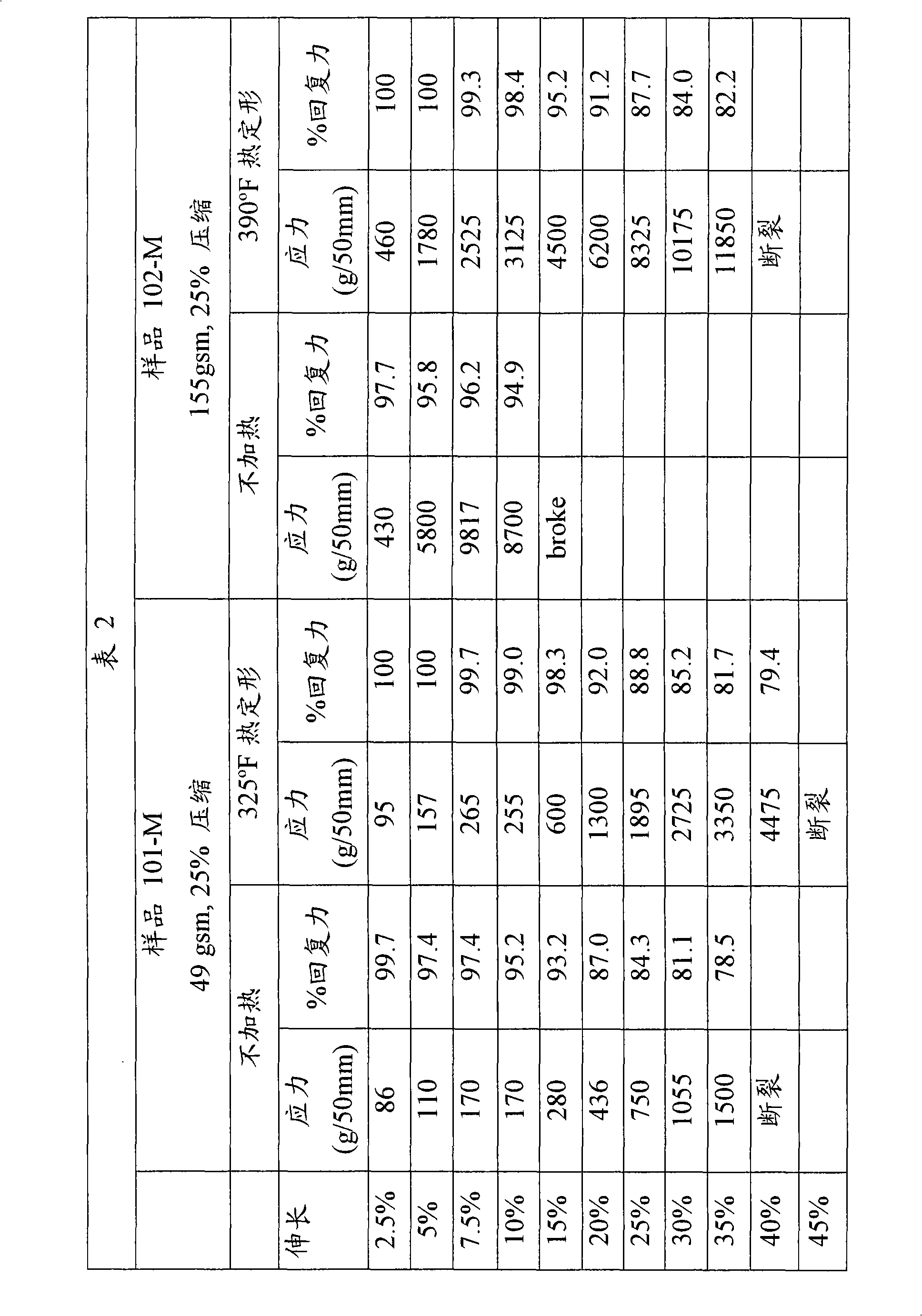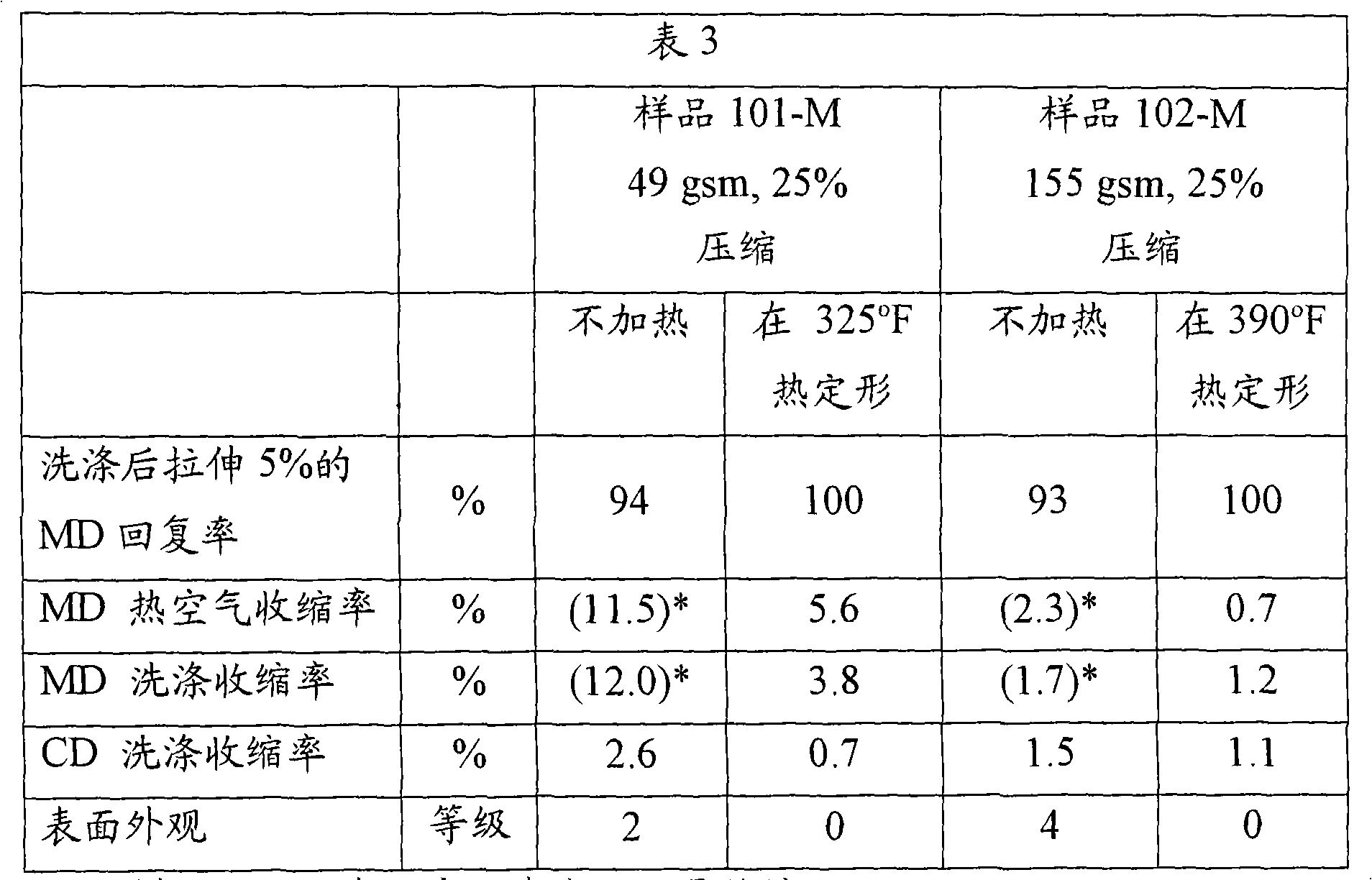Highly resilient, dimensionally recoverable nonwoven material
A non-woven fiber web, elastic technology, applied in the direction of non-woven fabrics, synthetic cellulose/non-cellulose material pulp/paper, textiles and paper making, etc., can solve the problems of limiting non-woven fiber webs, etc.
- Summary
- Abstract
- Description
- Claims
- Application Information
AI Technical Summary
Problems solved by technology
Method used
Image
Examples
Embodiment 1
[0074] This example shows the effect of microcreping (according to Specification C2715 method) on product appearance, shrinkage and tensile recovery. Therefore, a wet-laid nonwoven fabric was prepared from a fiber slurry consisting of the following components: 40% 1.5 denier × 0.5 inch T-103 type polyester fiber; 20% 15.0 denier × 0.75 inch T- Type 103 polyester; 10% Aracruz eucalyptus pulp and 30% Irving softwood pulp. After preparation, the resulting nonwoven web was treated with an acrylic binder (TR407 from Rohm & Haas) such that the binder content was about 24% of the final total weight. After treatment with binder the material was dried and collected. The total material basis weight is 88.5 grams per square centimeter (g / m 2 ) and labeled as sample 100. Sample material 100-M for passing Sample 100 material after processing of Corporation Microcrease Specification C2715. Representative data for the resulting wetlaid nonwovens and their microcrepes are summarized in ...
Embodiment 2
[0078] In this example, two standard wet-laid nonwoven fabrics were prepared by papermaking according to Example 1. The first prototype was prepared using the following fiber composition: 30% 1.5 denier x 0.5 inch T-103 type polyester; 30% 1.5 denier x 0.25 inch T-103 type polyester; 10% Aracruz eucalyptus pulp and 30% Irving Cork pulp. After forming, the resulting nonwoven web was treated with an acrylic binder (TR407 from Rohm & Haas) so that the binder content reached the final total weight (set at 37 g / m 2 ) of about 18%. However, microcreping the nonwoven web yielded 49 g / m 2 The final product was marked 101-M. A second standard wet-laid nonwoven was prepared using the following fiber composition: 30% 1.5 denier by 0.5 inch T-103 type polyester fiber; 30% 15.0 denier by 0.75 inch T-103 type polyester fiber; 10% Aracruz Eucalyptus pulp and 30% Irving softwood pulp. After forming, the resulting nonwoven web was treated with an acrylic binder (E32NP from Rohm & Haas) so...
Embodiment 3
[0082] In this example, two identical nonwoven webs from Example 2, microcreped according to Specification C2715 with or without heatsetting, were washed and dried for 3 wash and dry cycles to determine their appearance and shrinkage properties. The samples were also hot air dried once to determine their heat shrinkage. Table 3 illustrates the shrinkage, appearance and stretch recovery results for 10 stretch cycles at 5% elongation.
[0083]
[0084] * These samples actually expand in length rather than contract.
[0085] The data indicate that heat setting during microcreping is also beneficial in providing dimensional stability of the samples after washing and drying cycles. The samples that were not heat set also showed a surface roughening or "crocodile" pattern on the surface after the wash and dry cycle. The samples that were heat set showed no surface roughening or "crocodile" pattern on the surface.
PUM
| Property | Measurement | Unit |
|---|---|---|
| length | aaaaa | aaaaa |
| melting point | aaaaa | aaaaa |
Abstract
Description
Claims
Application Information
 Login to View More
Login to View More - R&D
- Intellectual Property
- Life Sciences
- Materials
- Tech Scout
- Unparalleled Data Quality
- Higher Quality Content
- 60% Fewer Hallucinations
Browse by: Latest US Patents, China's latest patents, Technical Efficacy Thesaurus, Application Domain, Technology Topic, Popular Technical Reports.
© 2025 PatSnap. All rights reserved.Legal|Privacy policy|Modern Slavery Act Transparency Statement|Sitemap|About US| Contact US: help@patsnap.com



